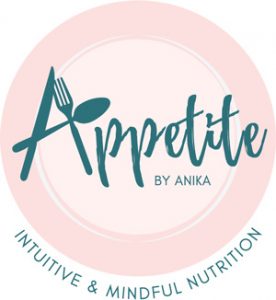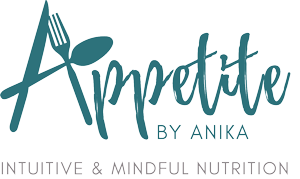Endometriosis is an inflammatory condition that has been found to cause 24 to 40% of chronic pelvic pain in women who have been diagnosed. It is due to the growth of endometrial tissue that forms exterior to the uterine cavity. It leads to chronic pain, infertility issues, risk of cancer and heavy bleeding4,5. It has a profound impact on various important aspects of life such as personal, work, social, finance, emotional, mental health and so on2,3. There are various medical and dietary strategies to manage endometriosis. These strategies can help to provide pain relief to some degree and could reduce inflammation. Changing your dietary intervention without proper guidance from a health professional can lead to gastrointestinal discomfort1.
With lot of nutrition misinformation available on the internet, it can be overwhelming and challenging to navigate and find evidence-based sources. Here we list down a few important truths that can help with the management of endometriosis.
#1: You don’t need to completely avoid gluten and dairy food sources
A retrospective cohort study, showed that low fat dairy food was linked with decrease in risk of developing endometriosis6. A cross sectional survey conducted on participants aged 18-45 residing in Australia, found that though dietary exclusions were practiced such as excluding gluten, dairy no one single diet seemed to provide beneficial effects12. Excluding certain food from food groups unless for medical condition or intolerance can lead to nutrients deficiency.
#2: You don’t need to follow a low FODMAP or a vegan diet
Research shows that including a variety of fruits and vegetables in your diet is related to decrease in oxidative stress markers in endometriosis, considering it is an inflammatory condition. Also including omega-3 sources of food found in oily fish, nuts and seeds may help to decrease endometriosis risk6. Following a low FODMAP diet can eliminate sources of good dietary fibre which is essential for avoiding constipation and relieving gastrointestinal discomfort. By pursuing a specific diet based on social media trends and without having a thorough understanding of it’s implications can lead to more harm than good. A whole food approach contributes to having a balanced healthy overall diet.
#3 Falling pregnant won’t cure your endometriosis
Around 30% of women with endometriosis can have difficulty conceiving. However, majority of the women can get pregnant without needing any medical intervention. During pregnancy, endometriosis symptoms may reduce due to hormonal changes. But in some cases, pain symptoms can sustain during pregnancy7,10.
#4 Your period pain is NOT normal
A lot of women normalise period pain as this is something we are often told to just put up with. Symptoms of period cramps that lasts few days is normal but persistent pain that has an impact on daily activities of life needs to be diagnosed. Seeking immediate help from a health professional, who specializes in this area is recommended8,9. Many people also believe that teenagers cannot have endometriosis and this is why period pain in teenage years is normalised and often overlooked. Prior to advancement of diagnosis, only women in the age range of 30s and 40s were diagnosed. But research in teenagers in 1990s found endometriosis in teenagers from the start of period who were suffering from chronic pelvic pain that was not relieved by medications9.
#5: Endometriosis cannot be cured by hysterectomy or hormonal treatments
Endometriosis cannot be cured by hysterectomy: As endometriosis is due to the growth of tissues exterior to the uterus, a surgery may not remove all the tissues including genetic factors that has caused endometriosis9,11. Hormonal treatments can help to alleviate symptoms when taken but cannot eliminate the condition. Surgery conducted by a specialist is the recommended treatment option9.
The Bottom Line: If you are suspecting a diagnosis, please make sure to get support from a doctor and other health professionals. Data from Australian surveys shows that around 15 of every 1,000 hospitalisations among females aged 15-44 were related to endometriosis13. Early diagnosis can help you manage endometriosis but it can take 7-10 years to obtain a correct diagnosis because the symptoms can vary and period pain is often normalised. I’d highly recommend seeing a dietitian so we can assist you with making dietary and lifestyle changes. Want to learn more on how you can improve your symptoms and manage your endometriosis? Click here to book a discovery call.

References
- Armour, M., Sinclair, J., Chalmers, K. J., & Smith, C. A. (2019). Self-management strategies amongst Australian women with endometriosis: A national online survey.BMC Complementary and Alternative Medicine, 19doi:http://dx.doi.org/10.1186/s12906-019-2431-x
- O’Hara, Rebecca, BBus, GradCertm, PhD, Rowe, Heather,B.Sc, PhD., Roufeil, Louise, BA, PhD,F.A.P.S., M.C.H.P., & Fisher, Jane, BSc,PhD., M.A.P.S. (2018). Should endometriosis be managed within a chronic disease framework? an analysis of national policy documents.Australian Health Review, 42(6), 627-634. doi:http://dx.doi.org/10.1071/AH17185
- Armour, M., Lawson, K., Wood, A., Smith, C. A., & Abbott, J. (2019). The cost of illness and economic burden of endometriosis and chronic pelvic pain in Australia: A national online survey.PLoS One, 14(10) doi:http://dx.doi.org/10.1371/journal.pone.0223316
- Safe work Australia educates employers on supporting workers with endometriosis. (2019). Professional Safety, 64(8), 12. Retrieved from https://www.proquest.com/scholarly-journals/safe-work-australia-educates-employers-on/docview/2269008125/se-2?accountid=31520
- Safe work Australia.(n.d). Supporting workers with endometriosis in the workplace[pdf file from the internet]. https://www.safeworkaustralia.gov.au/system/files/documents/2002/endometriosis.pdf
- Hoorsan, H., Mirmiran, P., Chaichian, S., Moradi, Y., Akhlaghdoust, M., Hoorsan, R., & Jesmi, F. (2017). Diet and risk of endometriosis: A systematic review and meta-analysis study.Iranian Red Crescent Medical Journal, 19(9) doi:http://dx.doi.org/10.5812/ircmj.41248
- Jean Hailes for women’s health. (2022).Endometriosis: Fertility & pregnancy[Internet]. https://www.jeanhailes.org.au/health-a-z/endometriosis/fertility
- Jean Hailes for women’s health. (2022). Let’s not normalise period pain-Medical observer [Internet]. https://www.jeanhailes.org.au/news/endometriosis-the-pain-that-cannot-be-dismissed-medical-observer
- Endometriosis.org: Global forum for news and information. (2022). Myths and misconceptions in endometriosis [Internet]. https://endometriosis.org/resources/articles/myths/
- Farland LV, Davidson S, Sasamoto N, Horne AW, Missmer SA. Adverse Pregnancy Outcomes in Endometriosis – Myths and Realities. Curr Obstet Gynecol Rep. 2020 Mar;9(1):27-35. doi: 10.1007/s13669-020-00281-1.
- Endometriosis Australia.(2014).Endo info-correcting the misinformation[Internet]. https://www.endometriosisaustralia.org/_files/ugd/aefbed_8c242174ab1941cb9e0dae0f6401c0e6.pdf
- Armour M, Middleton A, Lim S, Sinclair J, Varjabedian D, Smith CA. Dietary Practices of Women with Endometriosis: A Cross-Sectional Survey. J Altern Complement Med. 2021 Sep;27(9):771-777. doi: 10.1089/acm.2021.0068.
- Australian Institute of Health and Welfare.(2019). Endometriosis in Australia[pdf file from the internet]. https://www.aihw.gov.au/getmedia/b309c67c-0470-4eb3-92ea-9f067d7ee111/Factsheet_Endometriosis.pdf.aspx#:~:text=In%202016%E2%80%9317%2C%20there%20were,%E2%80%9344%20(Figure%202).





